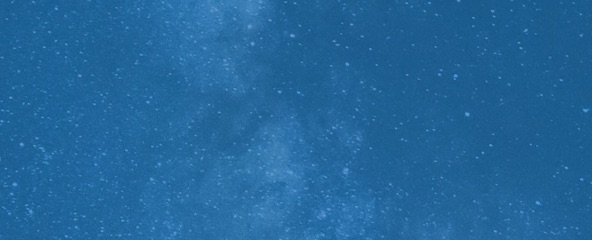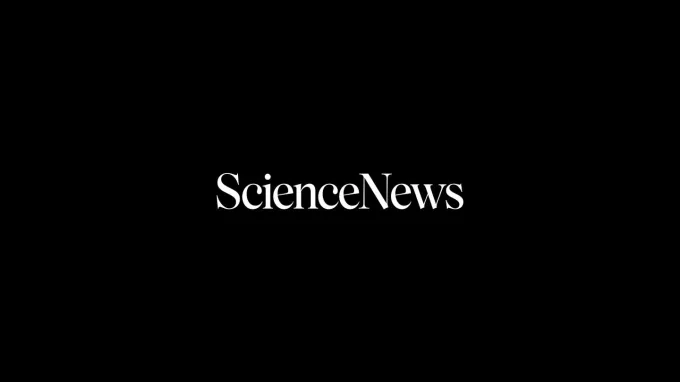Science News Magazine: Current Issue
Vol. 181 No. #8
Trustworthy journalism comes at a price.
Scientists and journalists share a core belief in questioning, observing and verifying to reach the truth. Science News reports on crucial research and discovery across science disciplines. We need your financial support to make it happen – every contribution makes a difference.
More Stories from the April 21, 2012 issue
-
 Life
LifeBee genes may drive them to adventure
Scouting behavior linked to certain molecules in insect brains.
-
 Paleontology
PaleontologyTriceratops reigns alone again
Fossil comparison fends off a challenge that holds the dinosaur is but the immature version of the Torosaurus.
By Devin Powell -
 Chemistry
ChemistryPolymer power drives tiny reactions
Applying pressure to a building block of plastic in water, researchers generate enough energy to make your Nikes glow and do other chemical work.
-
 Life
LifeCarnivores can lose sweet genes
A gene involved in taste detection has glitches in some, but not all, highly carnivorous mammals.
By Susan Milius -
 Life
LifeSize doesn’t matter for crayfish’s one-two crunch
Biological deception may give crustaceans an advantage during a fight.
-
 Health & Medicine
Health & MedicineRetina can help reveal brain health
Among older women, diseased blood vessels at the back of the eye are linked to lower scores on mental tests and other signs of possible ministrokes.
-
 Life
LifeGeneticists go ape for better primate family tree
The first gorilla genome and a more detailed look at chimp genetics provide new clues to evolution of humans and their closest relatives.
-
 Chemistry
ChemistryBetter hydrogen storage process unveiled
Scientists create a chemical switch that can catch and release the useful gas.
-
 Earth
EarthNanopollutants change blood vessel reactivity
Tiny particles alter normal vessel functions, animal studies show.
By Janet Raloff -
 Space
SpaceTitan’s haze is dropping
Change in elevation of cloudy layer suggests seasonal cycles on Saturn’s moon.
By Nadia Drake -
 Life
LifeIndustrial roar changes nearby plant reproduction
Trees and wildflowers register the effects as animals flee (or not) from grinding engines.
By Susan Milius -
 Health & Medicine
Health & MedicineAbnormal cells may signal hidden heart risk
Damage to blood vessel lining shows up in blood tests.
By Nathan Seppa -

-
 Life
LifeThe yin and yang of male pattern baldness
The discovery of a hormone-like molecule in the scalp may offer new clues for treating baldness.
-
 Chemistry
ChemistryOpioids’ molecular magic unmasked
New 3-D structures of opiumlike drugs bound to the body’s proteins will aid the development of better painkillers and the battle against drug abuse.
By Devin Powell -
 Space
SpaceSmallest planet yields big surprises
Spacecraft images reveal Mercury has a complicated inside and an active geologic past.
By Nadia Drake -
 Space
SpaceVesta seems more planet than asteroid
Spacecraft explorations reveal a layered, beat-up celestial body.
By Nadia Drake -
 Planetary Science
Planetary ScienceHighlights from the 43rd Lunar and Planetary Science Conference, The Woodlands, Texas, March 19-23
Geologic activity and weather on Saturnian moons, and studies in Greenland to learn about Mars.
By Science News -
 Chemistry
ChemistryLife’s building blocks grow close to home
Chemical reactions in the early solar system create complex organic molecules.
By Nadia Drake -

Highlights from the Society of Toxicology Annual Meeting, San Francisco
Estrogen mimics may delay puberty and honeybees hurting from pesticides.
By Janet Raloff -

Science Past from the issue of April 21, 1962
GLENN REPORTS ON FLIGHT — The brilliant light from the “fireball” Astronaut John H. Glenn Jr. saw passing the window of his space capsule was observed by more than 1,400 scientists at a symposium in Washington, D.C. A color film, showing the astronaut in his cabin during flight, clearly revealed reflections of the burning chunks […]
By Science News -

Science Future for April 21, 2012
April 28 Celebrate Astronomy Day with stargazing, workshops and other events nationwide. For more information, see bit.ly/GTe2wm May 3 An underwater archaeologist talks about surveys of pirate ships as part of a Science Museum of Minnesota series on the science and history of pirates. See bit.ly/xAPeLZ
By Science News -

SN Online
SCIENCE & THE PUBLIC BLOG A court orders FDA hearings on livestock drugs. See “Growth-promoting antibiotics: On the way out?” Jason Brougham/Univ. of Texas LIFE A birdlike dinosaur (illustrated below) was iridescent. Read “Microraptor’s true blue colors.” ENVIRONMENT Deep corals were harmed by the BP spill. Learn more in “The farther the better for corals […]
By Science News -

The Quantum Universe (And Why Anything That Can Happen, Does) by Brian Cox and Jeff Forshaw
Two physicists use simple analogies to explain the weird world of quantum theory. Da Capo Press, 2011, 256 p., $25
By Science News -

Virtually You: The Dangerous Powers of the E-Personality by Elias Aboujaoude
A psychiatrist examines online alter egos and how they can affect life offline, sometimes for the worse. W.W. Norton, 2011, 349 p., $17.95
By Science News -

The Power of Habit: Why We Do What We Do in Life and Business by Charles Duhigg
A journalist explores research on how habits are formed in the brain, how to create new ones and what it takes to break them. Random House, 2012, 371 p., $28
By Science News -

The Creative Destruction of Medicine: How the Digital Revolution Will Create Better Health Care by Eric Topol
A look at new technologies such as genome sequencing and organ growth suggests that digital advances could usher in a new age of personalized medicine. Basic Books, 2012, 304 p., $27.99
By Science News -

-

BOOK REVIEW: Quiet: The Power of Introverts in a World That Can’t Stop Talking by Susan Cain
Review by Janet Raloff.
By Science News -

-
 Health & Medicine
Health & MedicineThroat Therapy
Scientists seek a cough remedy that really delivers relief.
By Laura Beil -

Mixed Results
Having the right blend of animal personalities can make or break a group
By Susan Milius -

Letters
Consciousness series pondered Hofstadter’s “strange loop” and other ideas presented in the article “Self as symbol” (SN: 2/11/12, p. 28) suggest, but never say, that the notion of “I” exists in the dimension of time, not space. Obviously then, consciousness is not a tangible object — not any part of the brain. Rather, the “I” […]
By Science News -

-

Lone Survivors: How We Came to Be the Only Humans on Earth by Chris Stringer
A paleoanthropologist argues that multiple early human groups arose and competed in Africa. Times Books, 2012, 320 p., $28
By Science News
